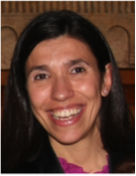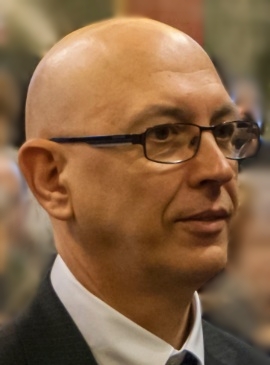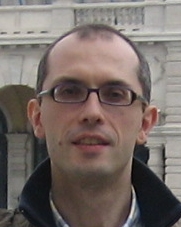Studying at the University of Verona
Here you can find information on the organisational aspects of the Programme, lecture timetables, learning activities and useful contact details for your time at the University, from enrolment to graduation.
Academic calendar
The academic calendar shows the deadlines and scheduled events that are relevant to students, teaching and technical-administrative staff of the University. Public holidays and University closures are also indicated. The academic year normally begins on 1 October each year and ends on 30 September of the following year.
Course calendar
The Academic Calendar sets out the degree programme lecture and exam timetables, as well as the relevant university closure dates..
| Period | From | To |
|---|---|---|
| I semestre | Oct 1, 2015 | Jan 29, 2016 |
| II semestre | Mar 1, 2016 | Jun 10, 2016 |
| Session | From | To |
|---|---|---|
| Sessione straordinaria Appelli d'esame | Feb 1, 2016 | Feb 29, 2016 |
| Sessione estiva Appelli d'esame | Jun 13, 2016 | Jul 29, 2016 |
| Sessione autunnale Appelli d'esame | Sep 1, 2016 | Sep 30, 2016 |
| Session | From | To |
|---|---|---|
| Sess. autun. App. di Laurea | Nov 25, 2015 | Nov 25, 2015 |
| Sess. invern. App. di Laurea | Mar 16, 2016 | Mar 16, 2016 |
| Sess. estiva App. di Laurea | Jul 12, 2016 | Jul 12, 2016 |
| Sess. autun 2016 App. di Laurea | Nov 23, 2016 | Nov 23, 2016 |
| Sess. invern. 2017 App. di Laurea | Mar 20, 2017 | Mar 20, 2017 |
| Period | From | To |
|---|---|---|
| Festività dell'Immacolata Concezione | Dec 8, 2015 | Dec 8, 2015 |
| Vacanze di Natale | Dec 23, 2015 | Jan 6, 2016 |
| Vancanze di Pasqua | Mar 24, 2016 | Mar 29, 2016 |
| Anniversario della Liberazione | Apr 25, 2016 | Apr 25, 2016 |
| Festa del S. Patrono S. Zeno | May 21, 2016 | May 21, 2016 |
| Festa della Repubblica | Jun 2, 2016 | Jun 2, 2016 |
| Vacanze estive | Aug 8, 2016 | Aug 15, 2016 |
Exam calendar
Exam dates and rounds are managed by the relevant Science and Engineering Teaching and Student Services Unit.
To view all the exam sessions available, please use the Exam dashboard on ESSE3.
If you forgot your login details or have problems logging in, please contact the relevant IT HelpDesk, or check the login details recovery web page.
Should you have any doubts or questions, please check the Enrollment FAQs
Academic staff
 alberto.benvegnu@univr.it
alberto.benvegnu@univr.it
 bruno.gobbi@univr.it
bruno.gobbi@univr.it
Ugolini Simone
 simone.ugolini@univr.it
simone.ugolini@univr.it
Study Plan
The Study Plan includes all modules, teaching and learning activities that each student will need to undertake during their time at the University.
Please select your Study Plan based on your enrollment year.
1° Year
| Modules | Credits | TAF | SSD |
|---|
2° Year activated in the A.Y. 2016/2017
| Modules | Credits | TAF | SSD |
|---|
3° Year activated in the A.Y. 2017/2018
| Modules | Credits | TAF | SSD |
|---|
| Modules | Credits | TAF | SSD |
|---|
| Modules | Credits | TAF | SSD |
|---|
| Modules | Credits | TAF | SSD |
|---|
Legend | Type of training activity (TTA)
TAF (Type of Educational Activity) All courses and activities are classified into different types of educational activities, indicated by a letter.
Introduction to computer architecture and operating systems (2016/2017)
Teaching code
4S02717
Credits
12
Language
Italian
Scientific Disciplinary Sector (SSD)
ING-INF/05 - INFORMATION PROCESSING SYSTEMS
The teaching is organized as follows:
Teoria
Laboratorio
Learning outcomes
Module:
-------
The first part of the class describes how to implement an algorithm into a digital architecture. Some design alternatives are presented ranging from a pure software, running on a general purpose computer, to an ad-hoc hardware implementation. The goal is to understand the compilation steps transforming an high-level programming language into machine-level code.
The second part of the class describes the architecture of an operating system, with the objective to understand the management and synchronization of processes and resources of a general-purpose computing system.
Program
Module:
-------
Fundamentals: information coding, Boolean functions, arithmetic.
Digital design: combinational circuits, sequential circuits, special purpose architectures (control unit + data path), programmable units.
Computer architecture: basic principles, instruction set, processor, memory hierarchy, I/O organization.
Practical exercises: assembly programming of LC-3 architecture.
Evolution and role of the operating system. Architectural concepts. Organization and functionality of an operating system.
Process Management: Processes. Process status. Context switch. Process creation and termination. Thread. User-level threads and kernel-level threads. Process cooperation and communication: shared memory, messages. Direct and indirect communication.
Scheduling: CPU and I/O burst model. Long term, short term and medium term scheduling. Preemption. Scheduling criteria. Scheduling algorithm: FCFS, SJF, priority-based, RR, HRRN, multiple queues with and without feedback. Algorithm evaluation: deterministic and probabilistic models, simulation.
Process synchronization: data coherency, atomic operations. Critical sections. SW approaches for mutual exclusion: Peterson and Dekker's algorithms, baker's algorithm. HW for mutual exclusion: test and set, swap. Synchronization constructs: semaphores, mutex, monitor.
Deadlock: Deadlock conditions. Resource allocation graph. Deadlock prevention. Deadlock avoidance. Banker's algorithm. Deadlock detection e recovery.
Memory management: Main memory. Logical and physical addressing. Relocation, address binding. Swapping. Memory allocation. Internal and external fragmentation. Paging. HW for paging: TLB. Page table. Multi-level paging. Segmentation. Segment table. Segmentation with paging.
Virtual memory: Paging on demand. Page fault management. Page substitution algorithms: FIFO, optimal, LRU, LRU approximations. Page buffering. Frame allocation: local and global allocation. Thrashing. Working set model. Page fault frequency.
Secondary memory. Logical and physical structure of disks. Latency time. Disk scheduling algorithms: FCFS, SSTF, SCAN, C-SCAN, LOOK, C-LOOK. RAID.
File System: file, attributes and related operation. File types. Sequential and direct access. Directory structure. Access permissions and modes. Consistency semantics. File system structure. File system mounting. Allocation techniques: adjacent, linked, indexed. Free space management: bit vector, lists. Directory implementation: linear list, hash table.
I/O subsystem: I/O Hardware. I/O techniques: programmed I/O, interrupt, DMA. Device driver and application interface. I/O kernel services: scheduling, buffering, caching, spooling.
Bibliography
| Activity | Author | Title | Publishing house | Year | ISBN | Notes |
|---|---|---|---|---|---|---|
| Teoria | R.Katz, G.Borriello | Contemporary logic design (Edizione 2) | Pearson Education International | 2005 | 0-13-127830-4 | |
| Teoria | Y.N. Patt, S.J. Patel | Introduction to Computing Systems (Edizione 2) | McGrawHill | 2004 | 978-0-07-246750-5 | |
| Teoria | Franco Fummi, Mariagiovanna Sami, Cristina Silvano | Progettazione Digitale (Edizione 2) | McGraw-Hill | 2007 | 8838663521 | |
| Teoria | Abraham Silberschatz, Peter Baer Galvin, Greg Gagne | Sistemi operativi. Concetti ed esempi. (Edizione 9) | Pearson | 2014 | 9788865183717 |
Examination Methods
Module:
-------
Written text for the theoretical part (3/4 of final grade).
Programming projects and written text for the laboratory (1/4 of final grade).
Teaching materials e documents
-

 Architettura - Cap. 1-10 CLD Borriello-Katz
(it, 745 KB, 02/10/16)
Architettura - Cap. 1-10 CLD Borriello-Katz
(it, 745 KB, 02/10/16)
-

 Architettura - Dispense LC-3 Patt
(it, 6573 KB, 31/10/16)
Architettura - Dispense LC-3 Patt
(it, 6573 KB, 31/10/16)
-

 Architettura - Lezioni Vahid
(en, 291 KB, 29/11/16)
Architettura - Lezioni Vahid
(en, 291 KB, 29/11/16)
-

 Lezione Storia dei Sistemi di Calcolo
(en, 3100 KB, 15/01/17)
Lezione Storia dei Sistemi di Calcolo
(en, 3100 KB, 15/01/17)
-

 Lezioni UCB Sistemi Operativi (fino a lez. 15)
(en, 9620 KB, 15/01/17)
Lezioni UCB Sistemi Operativi (fino a lez. 15)
(en, 9620 KB, 15/01/17)
-

 XX-TV Temi d'esame
(it, 2835 KB, 19/11/16)
XX-TV Temi d'esame
(it, 2835 KB, 19/11/16)
-

 17-02-21 Esame.pdf
(it, 38 KB, 08/06/17)
17-02-21 Esame.pdf
(it, 38 KB, 08/06/17)
-

 countDown.asm
(it, 0 KB, 08/06/17)
countDown.asm
(it, 0 KB, 08/06/17)
-

 ElaboratoShell-Corretto.zip
(it, 127 KB, 27/04/17)
ElaboratoShell-Corretto.zip
(it, 127 KB, 27/04/17)
-

 ElaboratoSystemCall.pdf
(it, 417 KB, 31/05/17)
ElaboratoSystemCall.pdf
(it, 417 KB, 31/05/17)
-

 EserciziCodeMessaggiConSoluzioni.tgz
(it, 41 KB, 01/06/17)
EserciziCodeMessaggiConSoluzioni.tgz
(it, 41 KB, 01/06/17)
-
 EserciziFile.txt
(it, 0 KB, 20/04/17)
EserciziFile.txt
(it, 0 KB, 20/04/17)
-
 EserciziForkExec(caricaAnchetgz).txt
(it, 1 KB, 20/04/17)
EserciziForkExec(caricaAnchetgz).txt
(it, 1 KB, 20/04/17)
-

 EserciziForkExec(conTraccia).tgz
(it, 3 KB, 20/04/17)
EserciziForkExec(conTraccia).tgz
(it, 3 KB, 20/04/17)
-

 EserciziForkExec_Soluzioni.tgz
(it, 17 KB, 04/05/17)
EserciziForkExec_Soluzioni.tgz
(it, 17 KB, 04/05/17)
-

 EserciziMessaggi.tgz
(it, 15 KB, 11/05/17)
EserciziMessaggi.tgz
(it, 15 KB, 11/05/17)
-

 EserciziShell-Soluzioni.tgz
(it, 1 KB, 20/04/17)
EserciziShell-Soluzioni.tgz
(it, 1 KB, 20/04/17)
-
 EserciziShell.txt
(it, 1 KB, 13/04/17)
EserciziShell.txt
(it, 1 KB, 13/04/17)
-

 EserciziSignalsPipe.tgz
(it, 28 KB, 04/05/17)
EserciziSignalsPipe.tgz
(it, 28 KB, 04/05/17)
-

 Istruction SET - LC3.pdf
(it, 43 KB, 07/03/17)
Istruction SET - LC3.pdf
(it, 43 KB, 07/03/17)
-

 Lezione 1 - LC3.pdf
(it, 262 KB, 07/03/17)
Lezione 1 - LC3.pdf
(it, 262 KB, 07/03/17)
-

 Lezione 2 - LC3.pdf
(it, 369 KB, 07/03/17)
Lezione 2 - LC3.pdf
(it, 369 KB, 07/03/17)
-

 Lezione 3 - LC3.pdf
(it, 268 KB, 07/03/17)
Lezione 3 - LC3.pdf
(it, 268 KB, 07/03/17)
-

 SHELL - Esercizi Comandi Base.pdf
(it, 83 KB, 30/03/17)
SHELL - Esercizi Comandi Base.pdf
(it, 83 KB, 30/03/17)
-

 SHELL - Esercizi Comandi Medio.pdf
(it, 133 KB, 30/03/17)
SHELL - Esercizi Comandi Medio.pdf
(it, 133 KB, 30/03/17)
-

 SlideSystemCall.pdf
(it, 594 KB, 13/04/17)
SlideSystemCall.pdf
(it, 594 KB, 13/04/17)
-

 Testo Elaborato Shel-Correttol.pdf
(it, 128 KB, 27/04/17)
Testo Elaborato Shel-Correttol.pdf
(it, 128 KB, 27/04/17)
-

 Testo Elaborato Shell.pdf
(it, 126 KB, 13/04/17)
Testo Elaborato Shell.pdf
(it, 126 KB, 13/04/17)
-

 toLower-LC3.asm
(it, 1 KB, 08/06/17)
toLower-LC3.asm
(it, 1 KB, 08/06/17)
-

 Unix SHELL - Lucidi.pdf
(it, 4992 KB, 30/03/17)
Unix SHELL - Lucidi.pdf
(it, 4992 KB, 30/03/17)
Type D and Type F activities
Modules not yet included
Career prospects
Module/Programme news
News for students
There you will find information, resources and services useful during your time at the University (Student’s exam record, your study plan on ESSE3, Distance Learning courses, university email account, office forms, administrative procedures, etc.). You can log into MyUnivr with your GIA login details: only in this way will you be able to receive notification of all the notices from your teachers and your secretariat via email and soon also via the Univr app.
Graduation
List of theses and work experience proposals
| Stage | Research area |
|---|---|
| Correlated mutations | Various topics |
Attendance
As stated in the Teaching Regulations for the A.Y. 2022/2023, attendance at the course of study is not mandatory.

 +39 045 802 7072
+39 045 802 7072




























